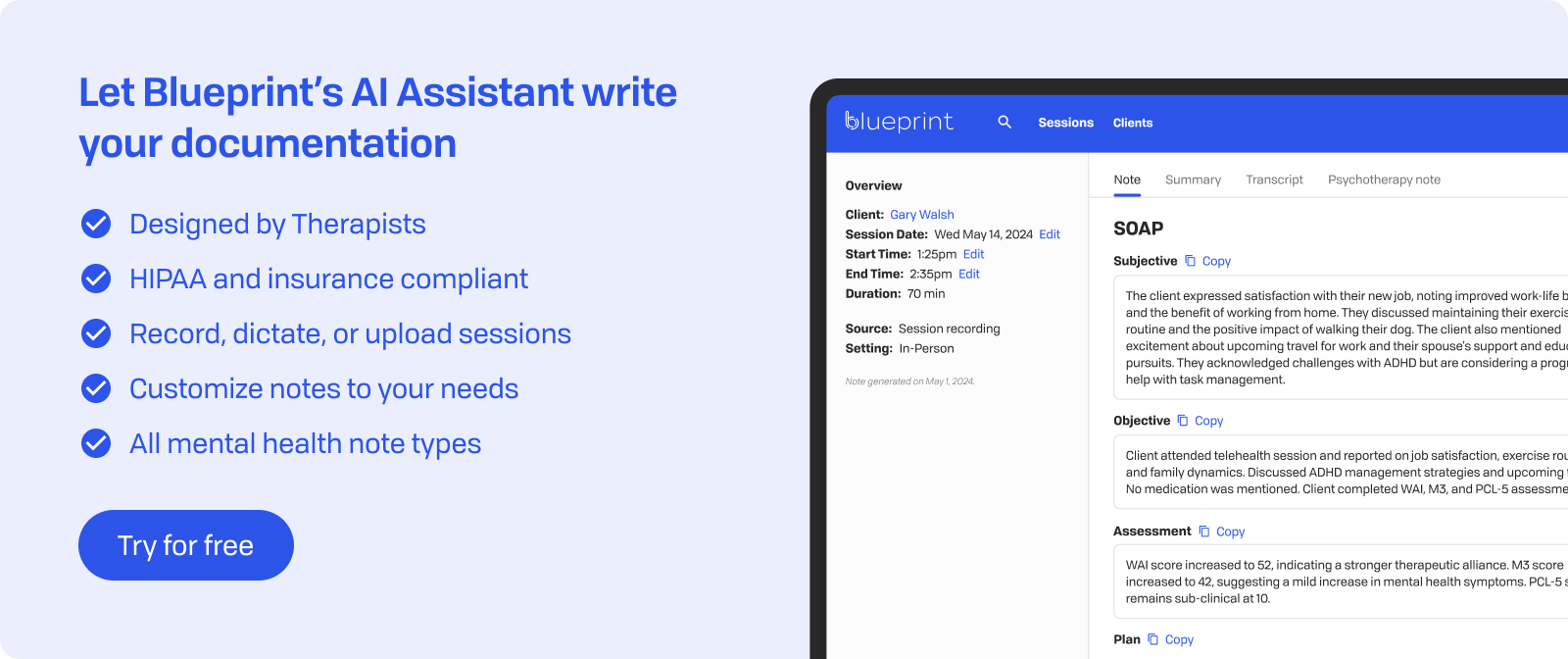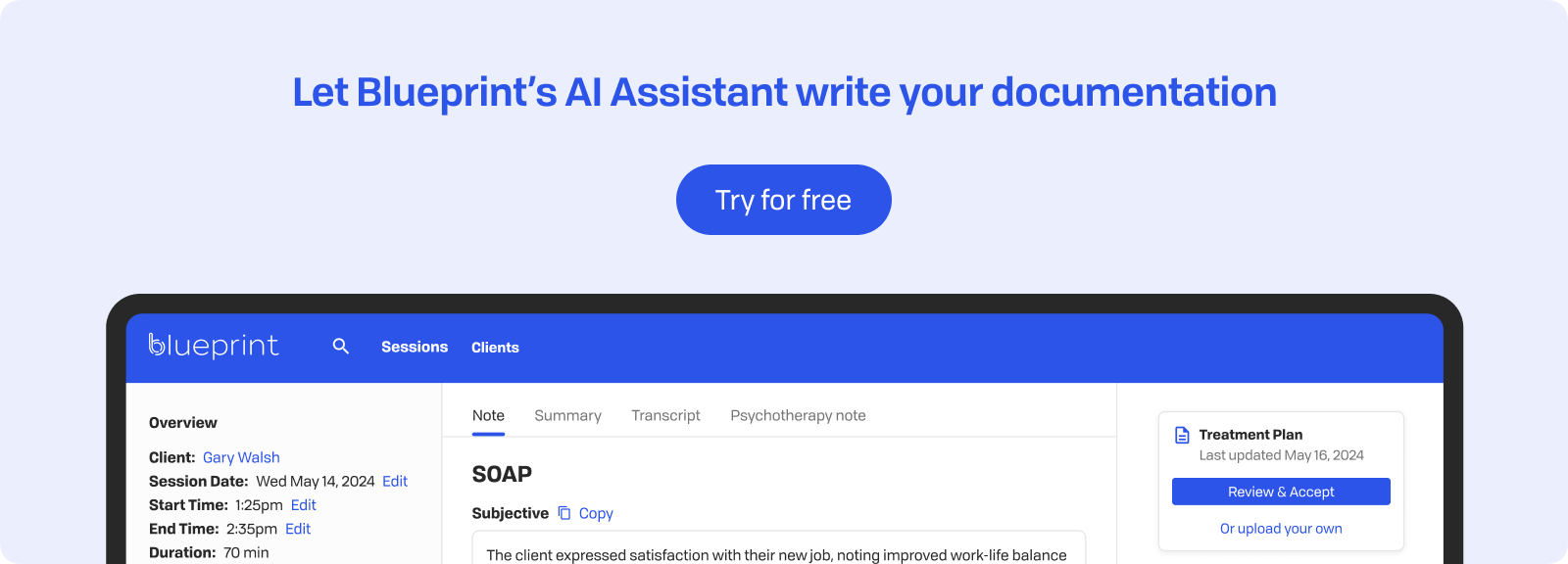
In Brief
The conversation about neurodivergence has changed a lot recently. More adults seek answers about why they feel different or face challenges in certain areas. Many find out that their perceived personal failings might actually be undiagnosed neurodivergent conditions.
When clients arrive at therapy with persistent difficulties—whether in relationships, work, or daily life—assessment tools can provide important insights. These evaluations offer more than just labels. They create a way to understand lifelong challenges and develop targeted interventions.
However, many therapists feel uncertain about when to suggest testing or how to integrate results into treatment. Knowing the role of neurodivergent assessments in clinical practice can change how we support these clients. Let's look at how these tools can improve both therapeutic outcomes and client self-awareness.
Understanding Neurodivergence in Therapy
Neurodivergence includes neurological differences such as ADHD, autism spectrum disorder, dyslexia, and other conditions that affect how people process information and interact with the world. These aren't deficits or disorders to fix—they're variations in human neurology that come with unique strengths and challenges. Research shows that up to 20% of the population may be neurodivergent, yet many individuals become adults without ever receiving an accurate diagnosis.
Testing matters because it provides a roadmap for both therapist and client. When someone finally understands why they've always struggled with time management, social cues, or sensory overload, it can be profoundly validating. Assessment results help explain patterns that may have caused years of shame, frustration, or self-blame. For treatment planning, these insights allow therapists to tailor interventions to match how the client's brain actually works, rather than using approaches designed for neurotypical individuals.
Common myths about neurodivergent assessment can prevent clients from getting the support they need. Many believe that testing is only for children, that high-achieving adults "can't" be neurodivergent, or that a diagnosis will limit their opportunities. Some worry that assessment tools like the RAADS-14 scale for autism screening or the Vanderbilt scales for ADHD are just ways to pathologize normal variations. In reality, these evidence-based tools help identify specific support needs and can open doors to accommodations, self-understanding, and more effective therapeutic strategies.

Signs a Client May Benefit from Testing
Identifying when to suggest neurodivergent testing involves observing patterns that persist across various areas of life. While everyone faces occasional challenges, certain clusters of difficulties often suggest that formal assessment could offer valuable insights.
Struggles with executive functioning often show up as chronic disorganization, time management issues, or trouble completing multi-step tasks. Clients might feel overwhelmed by routine responsibilities that others handle easily, consistently miss deadlines despite good intentions, or need extensive systems just to function at a basic level. These challenges often become more apparent during life transitions or when external structures decrease.
Social communication differences can manifest in ways beyond simple introversion. Look for clients who:
- Misinterpret social cues: Consistently misread tone, facial expressions, or implied meanings
- Experience conversation fatigue: Find small talk exhausting or have difficulty with unstructured social interactions
- Have relationship patterns: Report repeated misunderstandings with partners, friends, or colleagues
- Feel "out of sync": Describe feeling like they're performing a role rather than naturally connecting
Often, the most revealing sign comes directly from clients themselves. When someone frequently mentions feeling fundamentally different from others, describes masking their true self, or expresses confusion about why certain tasks feel impossibly hard, these self-observations warrant serious attention. Many neurodivergent adults develop sophisticated coping strategies that hide their struggles, making their own sense of difference a reliable indicator.
Pay close attention when multiple signs appear together or when clients' difficulties seem out of proportion to their intelligence, effort, or life circumstances.
Choosing the Right Assessment Tools
Knowing the difference between screening tools and formal diagnostic assessments is important for effective clinical practice. Screening tools like the RAADS-14 or Adult ADHD Self-Report Scale (ASRS) act as initial indicators suggesting that further evaluation might be beneficial. These brief questionnaires help identify possible neurodivergent traits but do not provide definitive diagnoses. Formal diagnostic tools such as the ADOS-2 or ADI-R require specialized training and offer a comprehensive evaluation through structured observations and interviews.
Selecting assessment tools that align with your client's specific concerns requires thoughtful consideration:
- For attention and executive function issues: Use ADHD screening tools like the Vanderbilt scales or ASRS.
- For social communication differences: Autism screening instruments such as the AQ or RAADS-14 may be suitable.
- For sensory processing concerns: Specialized sensory questionnaires can pinpoint specific sensitivities.
- For masking behaviors: Tools like the CAT-Q help identify individuals who camouflage neurodivergent traits.
Cultural context plays a significant role in assessment validity. Many standard tools were developed with predominantly white, Western populations and may not accurately capture neurodivergent presentations across different cultural backgrounds. Consider how cultural norms around eye contact, emotional expression, and social interaction might affect assessment results.
Ethical practice requires an honest recognition of your expertise. If you lack training in administering specific diagnostic tools, combining screening measures with appropriate referrals represents responsible practice. Collaborative care with specialists ensures clients receive a thorough evaluation while maintaining your therapeutic relationship. Document when and why you recommend an assessment, always prioritizing informed consent and client autonomy in the decision-making process.

Benefits of Assessment for Therapy
Assessment results change therapy from general approaches to more tailored interventions. When you know how a client's brain processes information, you can adjust your therapeutic techniques accordingly. For example, understanding that a client has ADHD may lead you to incorporate movement breaks, use visual aids, and break down complex concepts into smaller parts. This framework helps explain why traditional talk therapy might not have worked for certain clients in the past.
Receiving validation through assessment is incredibly important. Many neurodivergent adults have spent years feeling "lazy," "weird," or "broken." When a neurodivergent test provides clear explanations for their struggles, clients often feel a deep sense of relief. This shift from self-blame to understanding opens up possibilities for therapeutic progress. Shame fades when clients recognize their challenges come from neurological differences, not personal shortcomings.
Assessment results also improve the therapeutic relationship by enhancing communication strategies:
- Adjusted pacing: Changing the speed based on processing needs
- Modified language: Using concrete examples instead of abstract concepts
- Sensory considerations: Adapting the therapy environment to ease overwhelm
- Alternative formats: Including written summaries, visual tools, or structured agendas
This personalized approach goes beyond individual sessions. Assessment findings help determine which therapeutic methods might work best—whether it's adapting CBT for clients with autism, modifying mindfulness for ADHD, or using somatic approaches for sensory processing differences. The assessment serves as a guide for creating truly individualized, neurodiversity-affirming care that respects each client's unique neurological profile.

Integrating Results into Treatment Planning
Once you have neurodivergent test results, the real work begins: turning insights into practical therapeutic strategies. Assessment data provides guidance for adapting your approach to fit how each client's brain functions, rather than fitting them into neurotypical frameworks.
Adjusting therapeutic techniques to processing styles involves rethinking standard interventions. For clients with auditory processing differences, visual aids and written summaries become valuable tools. Those with ADHD might benefit from shorter sessions with movement breaks, while clients with autismoften appreciate structured agendas and clear expectations. Consider these adaptations:
- Information delivery: Tailor presentation style to processing strengths (visual, kinesthetic, or auditory)
- Session structure: Modify timing, pacing, and environmental factors based on sensory needs
- Communication methods: Use alternative formats like email check-ins or voice notes
- Homework modifications: Design tasks that align with executive function profiles
Strengths-based interventions shift focus from deficits to capabilities. Many neurodivergent individuals have intense interests, pattern recognition abilities, or creative problem-solving skills that traditional therapy often overlooks. Incorporating these strengths into treatment—whether through special interest metaphors or leveraging focused attention tendencies—creates more engaging and effective interventions.
Collaboration extends beyond the therapy room when appropriate. With client consent, coordinating with employers about workplace accommodations, consulting with educators about learning supports, or helping family members understand neurodivergent communication styles enhances therapeutic impact. This broad approach ensures clients receive consistent support across all areas of life, making lasting change more achievable.
Talking About Assessment Results with Clients
How you present neurodivergent test results can greatly influence how clients perceive themselves and their future. This conversation requires thoughtful attention to language, timing, and the client's readiness to receive the information. Scheduling a dedicated feedback session allows clients the time they need to process findings without feeling rushed.
Language plays a crucial role when sharing assessment outcomes. Use neutral or strengths-based descriptions instead of deficit-focused terminology. For example, say "differences in social processing" or "unique communication style" rather than "deficits in social communication." Respect the language clients prefer for themselves—some may choose identity-first language ("autistic person"), while others may go with person-first ("person with ADHD"). Let them guide you in this choice.
Assist clients in integrating this new understanding into their existing self-concept by:
- Normalizing their experiences: Connect assessment findings to specific life challenges they've shared.
- Highlighting strengths: Point out abilities often associated with their neurotype, such as pattern recognition, creativity, or hyperfocus.
- Reframing past struggles: Help them view difficulties through a neurodivergent lens rather than as personal failures.
- Exploring identity: Allow space for mixed feelings about diagnosis—relief, grief, or confusion are all valid reactions.
Provide tangible resources for ongoing support. This might include neurodivergent-affirming therapists, peer support groups, workplace accommodation guides, and educational materials. Consider crafting a personalized resource list based on their specific needs and interests. Facilitate connections with neurodivergent communities where they can learn from others with similar experiences. Remember that receiving assessment results often marks the start of a journey toward self-understanding and acceptance.

Key Takeaways
Neurodivergent testing helps therapists understand client needs while highlighting their unique strengths and capabilities. These assessments allow therapy to go beyond one-size-fits-all approaches, fostering truly individualized care that respects how each person's brain functions.
The most significant impacts of assessment include:
- Clarity and validation: Testing offers concrete explanations for lifelong struggles, replacing self-blame with understanding
- Personalized treatment planning: Results inform specific adaptations to therapeutic techniques, communication styles, and intervention strategies
- Strengths-based focus: Assessments uncover hidden talents and abilities that can be integral to treatment plans
- Reduced shame and increased self-acceptance: Understanding neurodivergence as a natural variation rather than a deficit changes how clients perceive themselves
- Enhanced therapeutic alliance: When clients feel truly understood through neurodiversity-affirming approaches, trust and progress can accelerate
Sharing assessment results requires careful attention to language and timing. Use empowering, collaborative approaches that respect client preferences and readiness. Provide comprehensive resources and connections to neurodivergent communities for ongoing support.
Remember that ethical practice demands working within your expertise. Screen when appropriate, but refer to specialists for comprehensive diagnostic evaluations. Document your clinical reasoning and maintain collaborative relationships with assessment professionals to ensure clients receive thorough, accurate evaluations.
Neurodivergent testing isn't about labeling or restricting, it's about finding ways to offer more effective support. When used thoughtfully, these assessments can turn therapy from a struggle against perceived deficits into a journey of self-discovery and empowerment.

How Blueprint can help streamline your workflow
Blueprint is a HIPAA-compliant AI Assistant built with therapists, for the way therapists work. Trusted by over 50,000 clinicians, Blueprint automates progress notes, drafts smart treatment plans, and surfaces actionable insights before, during, and after every client session. That means saving about 5-10 hours each week — so you have more time to focus on what matters most to you.
Try your first five sessions of Blueprint for free. No credit card required, with a 60-day money-back guarantee.























